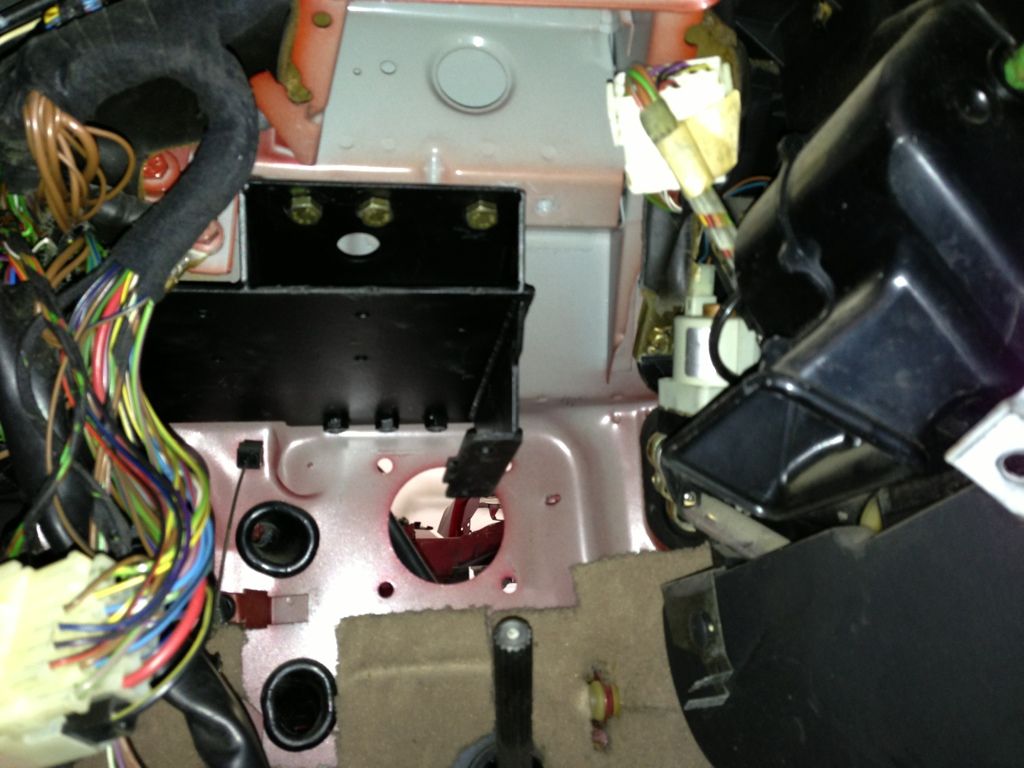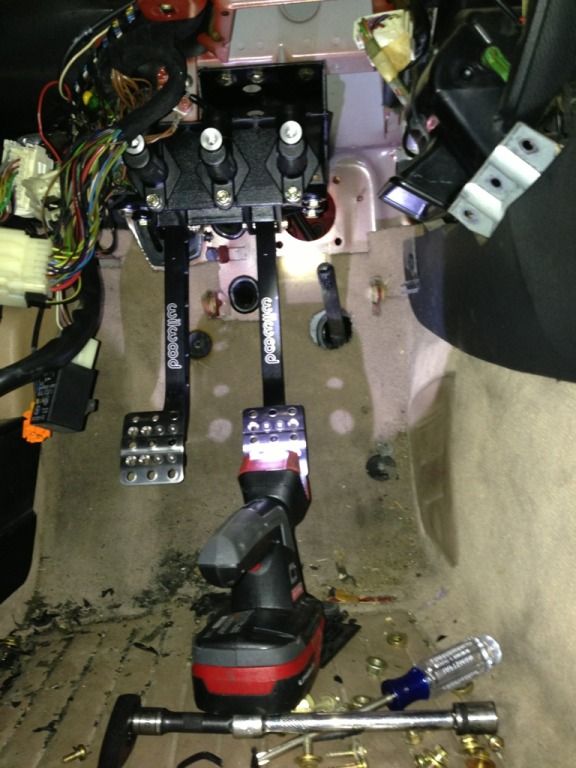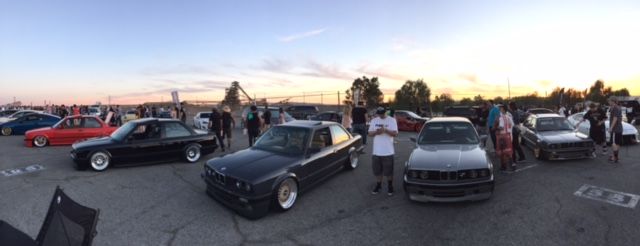We never made a thread for these boosterless brackets! So here it is:
Can be bought here

Installed (member Vtec?lol)

Our boosterless brake bracket. Allows the use of a Wilwood or Tilton Manual Brake & Clutch Pedal assembly. This makes it easier to swap in bigger engines. V8 swaps become easier as well as ITB projects. The factory booster is in the way.
Allows you to fine tune bore sizes (separate front and rear masters as well as separate clutch cylinder too).
With this setup braking effort will be increased. Compensate using smaller bores.
Matching bore size depends on brake setup and primary use. Will the car be used on streets (meaning less pedal effort and less fatigue)? Track only (need a firmer pedal/performance)? Little bit of both (something in between)?
We usually recommend 5/8 bore all the way around to start. This is the safe bet to make sure the pedal is not so unbearable when you apply the brakes. It is the bore that will allow least effort to be applied. However the "throw" of the pedal will be longer. If the car will be used on the streets quite a bit, this may be the best bet simply because of the effort needed to push the pedal over and over and over again in normal street driving. (3/4 for clutch!)
Bigger bores mean less throw, produces more volume, and a firmer pedal.
Smaller bores mean more throw, produces more pressure, and a softer pedal.
Some customers who daily their cars with this boosterless setup use 5/8 all around and this is what we tested with.
However other customers who track the car (or have the e36 m front and 318 rear) can compensate by using 3/4 front and 5/8 back to compensate for the bore diffrences.
As always, the balance bar can supply the fine tuning to get the biased just right.
It will take some experimenting but 5/8 is a good/safe place to start. If you desire a firmer pedal step up to the next bore.
General rule of thumbs:
Bigger bores: Minimal pedal travel/stiffer pedal/higher pedal effort.
Smaller bores: Long pedal travel/softer pedal/less pedal effort. All grade 8 hardware included.
If you increase the diameter of the master cylinder you will reduce line pressure which reduces clamping force.
All hardware included! We offer fittings as well. Powdercoat option available.
Instructions:http://garagistic.com/index.php?page...-tilton-pedals


(from member MJCRO v8 swap!)


Can be bought here (or send us a PM and we will send a paypal invoice!)
Currently got 13 in stock and ready to ship!
So we just launched a plumbing kit for this boosterless set:


Please note that version 2 is now here. This will include easier installation design as well as provision for brake biased adjuster.
Can be bought here

Installed (member Vtec?lol)

Our boosterless brake bracket. Allows the use of a Wilwood or Tilton Manual Brake & Clutch Pedal assembly. This makes it easier to swap in bigger engines. V8 swaps become easier as well as ITB projects. The factory booster is in the way.
Allows you to fine tune bore sizes (separate front and rear masters as well as separate clutch cylinder too).
With this setup braking effort will be increased. Compensate using smaller bores.
Matching bore size depends on brake setup and primary use. Will the car be used on streets (meaning less pedal effort and less fatigue)? Track only (need a firmer pedal/performance)? Little bit of both (something in between)?
We usually recommend 5/8 bore all the way around to start. This is the safe bet to make sure the pedal is not so unbearable when you apply the brakes. It is the bore that will allow least effort to be applied. However the "throw" of the pedal will be longer. If the car will be used on the streets quite a bit, this may be the best bet simply because of the effort needed to push the pedal over and over and over again in normal street driving. (3/4 for clutch!)
Bigger bores mean less throw, produces more volume, and a firmer pedal.
Smaller bores mean more throw, produces more pressure, and a softer pedal.
Some customers who daily their cars with this boosterless setup use 5/8 all around and this is what we tested with.
However other customers who track the car (or have the e36 m front and 318 rear) can compensate by using 3/4 front and 5/8 back to compensate for the bore diffrences.
As always, the balance bar can supply the fine tuning to get the biased just right.
It will take some experimenting but 5/8 is a good/safe place to start. If you desire a firmer pedal step up to the next bore.
General rule of thumbs:
Bigger bores: Minimal pedal travel/stiffer pedal/higher pedal effort.
Smaller bores: Long pedal travel/softer pedal/less pedal effort. All grade 8 hardware included.
If you increase the diameter of the master cylinder you will reduce line pressure which reduces clamping force.
All hardware included! We offer fittings as well. Powdercoat option available.
Instructions:http://garagistic.com/index.php?page...-tilton-pedals


(from member MJCRO v8 swap!)


Can be bought here (or send us a PM and we will send a paypal invoice!)
Currently got 13 in stock and ready to ship!
So we just launched a plumbing kit for this boosterless set:


Please note that version 2 is now here. This will include easier installation design as well as provision for brake biased adjuster.







Comment